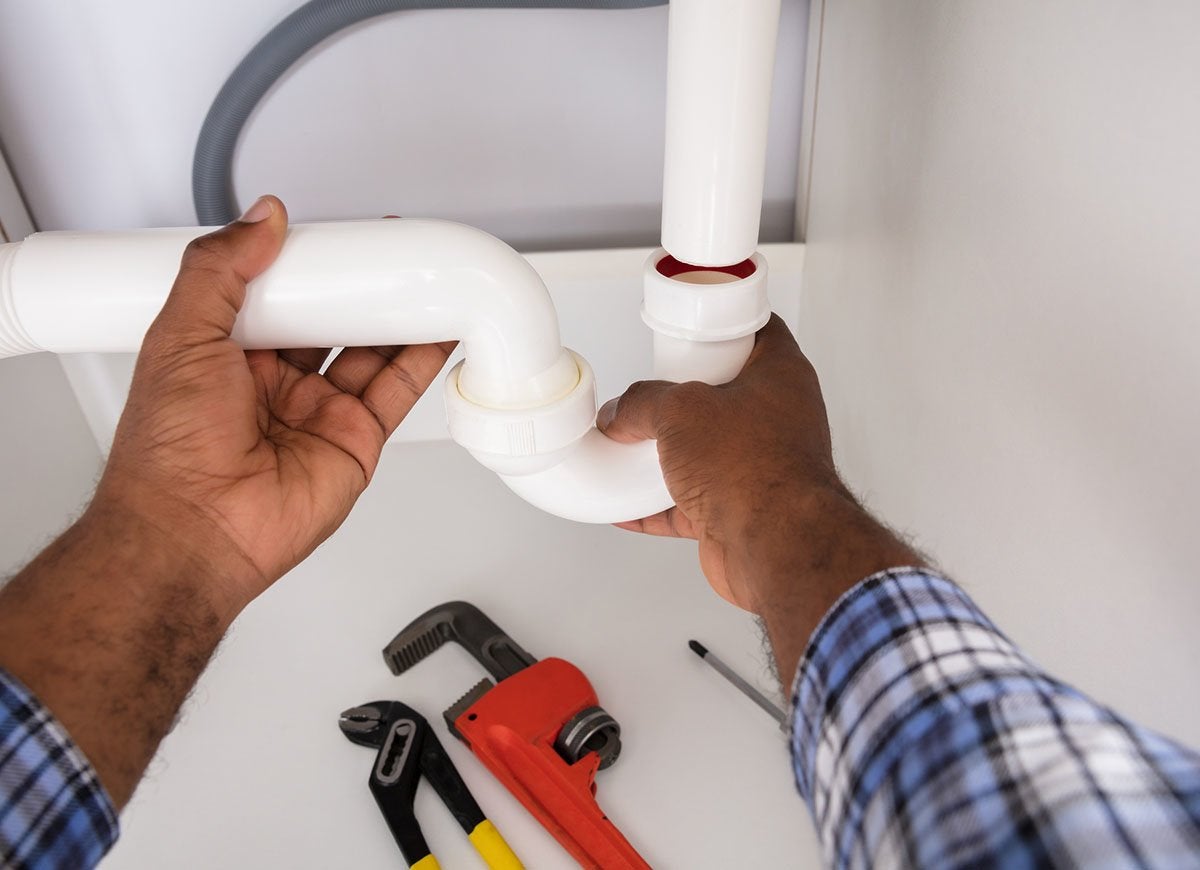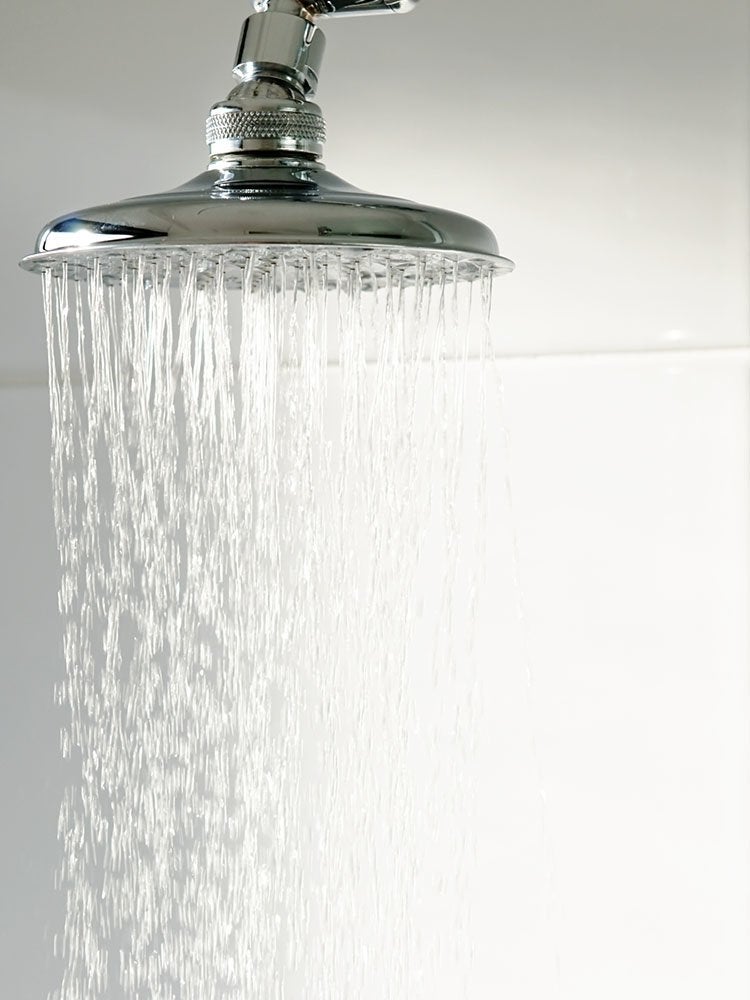

We may earn revenue from the products available on this page and participate in affiliate programs. Learn More ›
Home Advice You Can Trust
Tips, tricks & ideas for a better home and yard, delivered to your inbox daily.
By signing up you agree to our Terms of Service and Privacy Policy.
Water: A Precious Resource

Americans who live in regions where water is at a premium know all too well the importance of conserving this precious resource. On average, people in the United States use about 88 gallons of water per day per household, and plenty of that water is wasted, whether through leaks or inefficient use. Luckily, with just a few small but savvy changes, we can limit waste, help the environment, and preserve this increasingly scarce resource.
Install a Gray Water System

A gray water system takes wastewater from plumbing sources (except the toilet, of course) and reuses it throughout the home. (Toilet water is considered black water because it’s mixed with human waste; gray water is water that’s not safe to drink but is safe for other purposes.) A considerable portion of the water a household uses can be recycled through a gray water system and then used to water plants or flush toilets. Setting up a gray water system is a bit tricky in older homes, but this type of plumbing configuration can be easily incorporated into new construction. The cost varies, but a modest whole-house system typically maxes out at around $2,500.
Set Up a Rain Barrel

One of the easiest ways to conserve and reuse water is to set up a rain barrel to collect the rainwater that flows from your home’s gutters. Installation is simple: Position the rain barrel near a downspout, then attach a diverter to channel water from the downspout to the barrel. It’s a good idea to elevate the barrel on a wooden stand or cinder blocks to make it easier to access the spigot, which is usually toward the base of the barrel. Once your barrel is installed, you’ll be able to use the harvested water to satisfy your thirsty garden plants, reducing your reliance on municipal water.
Reuse Pasta Water

Many sources suggest using leftover pasta water for your household plants, but we don’t recommend this, especially if you’re boiling your pasta the right way—with plenty of salt. That said, you can use that briny liquid to thin sauces or steam vegetables to serve as a side. Be sure to reuse this water on the spot; because of its high starch content, it spoils quickly.
Collect Shower Water

If a gray water system seems overly complicated or lies outside your budget, implement a simple DIY water-catching trick: Strategically place a bucket in the shower to capture drain-bound droplets, then use that collected water on your houseplants or in your garden. Clean water collected while you’re waiting for the shower to get hot can even be used to wash dishes.
Install a Sink-to-Toilet System

If an entire gray water system is out of the question, consider putting in a simplified version that connects your toilet to your bathroom sink in order to use gray water from the sink to help flush the toilet.
Collect Half-Used Glasses of Water

Throughout the day, you probably find a number of half-full glasses of water lying around your house. Someone fills one up, takes a few sips, and then leaves the glass behind and moves on. Instead of pouring that water down the drain, use it to water houseplants, add it to the watering can outside, or even save it for washing the dishes.
Recycle Pool Water

Pools are incredibly fun backyard features, but they waste a lot of water. In areas where winter hits hard, early summer is spent draining and refilling algae-filled pools. Did you know that it’s possible to recycle that dirty green water instead of dumping it? Filthy pool water can be purified through reverse osmosis. This process is mainly used to sanitize drinking water, but it’s also practical for swimming pools. Take advantage of this pool cleaning method and let professionals take the reins while you busy yourself with other spring cleaning tasks.
Harvest Rainwater for Your Swimming Pool

Do you need to fill up a brand-new pool? An eco-friendly method is to supplement municipal water with roof-collected rainwater. Remember that any water harvested must be treated using reverse osmosis or other sanitizing methods.
Reuse Bathwater

Scrub-a-dub-dub, you’re hanging out in the tub! Great! Here’s the problem: A bath uses up a whole lot of water. Just think about all that water swirling down the drain after you’ve relaxed and unwound. Depending on which products you use during your bath, you may be able to scoop out leftover water and use it for washing clothes or watering the garden, but remember that garden plants don’t respond well to harsh cleansers.
Recycle the Aquarium Water

It takes gallons and gallons of water to keep a garden thriving all summer long. Owners who need to change a quarter of the tank water on a biweekly basis can still be conscientious by recycling the water that’s removed from the fish tank. As long as the water is free of potentially damaging chemicals (for instance, aquarium salt, medications, or algae killers), it’s an excellent natural fertilizer for your plants.

Our Favorite Prime Day Deals Are Sure to Sell Out
Prime Day runs July 8 through 11, and Amazon (and many more retailers) have released hundreds of exciting seasonal deals. Check out our favorite products in the sales, from power tools and outdoor equipment to robot vacuums and power stations.